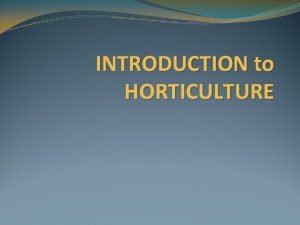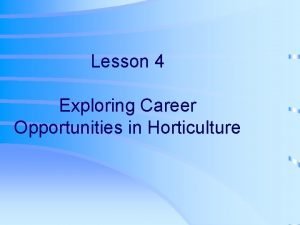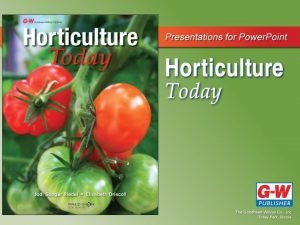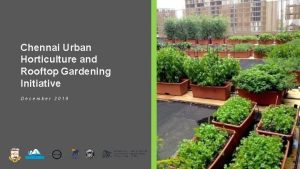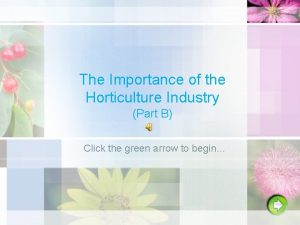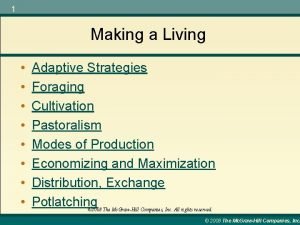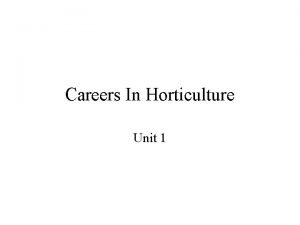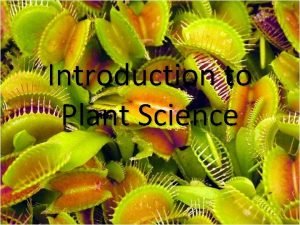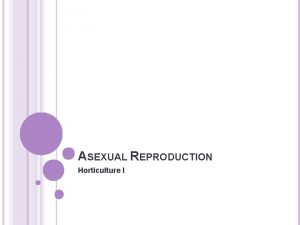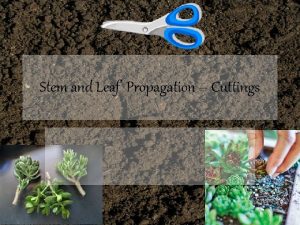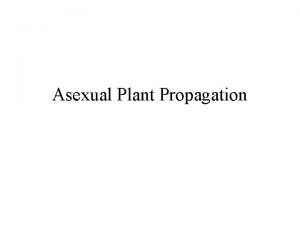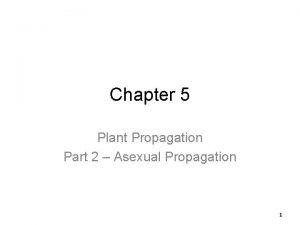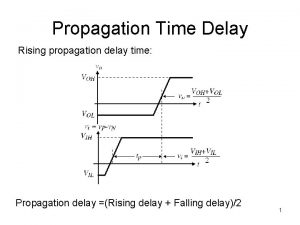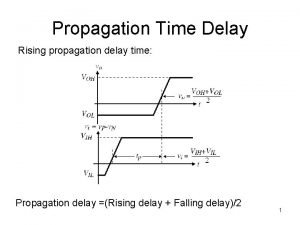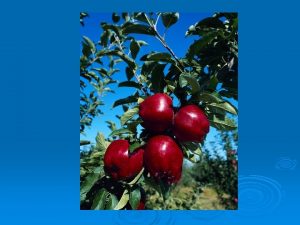ASEXUAL PROPAGATION INTRO TO HORTICULTURE What is Asexual

















- Slides: 17

ASEXUAL PROPAGATION INTRO TO HORTICULTURE

What is Asexual propagation? �Asexual propagation is the reproduction of new plants from the stems, roots or leaves of the parent plant.

Advantages & Disadvantages The advantages : ▪ Plants can be reproduced faster ▪ Plants are genetically identical to the parent plant. ▪ Plants have the same traits as the parent plant. The disadvantage: There is little genetic variation. (Genetic Diversity)

What are the types asexual propagation? � A. Cuttings: using the stems and leaves to reproduce plants � B. Division/Separation: pulling apart groups of plants to make new individuals � C. Layering: producing a plant from while that part is still on the parent plant � D. Grafting & Budding: connecting two pieces of living plant material together to form a single plant. � E. Tissue Culture involves taking small tissues from the parent plant and growing them in a nutrient rich solution.

Cuttings �Cuttings are the most commonly used and commercially important method of asexual reproduction. Cuttings are part of the stem, leaf or root of the plant.

A. Stem Cuttings Herbaceous cuttings are from plant stems without wood such as impatiens, coleus or geraniums. �

Softwood & semihardwood cuttings �Softwood and semi-hardwood cuttings are made when cuttings have several small leaves on them. � Junipers, yews and thujas are examples of the evergreen plants. Azaleas, barberry, boxwood, wisteria or any woody shrub can be used.

Hardwood Cuttings � Hardwood Cuttings are easy and inexpensive methods of asexual propagation. Roses, dogwood, grapes are a few of the deciduous plants.

Leaf Cuttings �Leaf Cuttings are made from the leaf blade. Plants with fleshy leaves such as Rex begonias and Gloxinias work well. �One of the easiest plants to use for leaf cuttings is the Sansevieria.

Leaf Bud Cuttings �Leaf Bud Cuttings consist of the leaf, petiole and small piece of the stem. Rhododendrons, ivy and dieffenbachias.

Root Cuttings �Root cuttings are taken from any plant that will sucker at the root. Wisteria, raspberries, spirea and clematis are easily propagated by root cuttings.

Commonly used rooting media provide good drainage. �A. Sand �B. Pine Bark �C. Perlite �D. Vermiculite �E. Peat moss �F. Various mixtures of the materials (3 B mix)

Division/Separation �Division/separation involves using underground plant parts to act as an organ of food storage until the new plant can form. Perennial plants that die back and over winter are good candidates. (Bleeding hearts, Hosta) Separation uses natural structures such as bulbs or corms. (Tulips, Gladiolus, Crocus) Division uses parts of the plant such as rhizomes or tubers. ( Ginger, Dahlias)

Layering �Layering is reproducing a plant from a part of the plant while that part is still connected to the parent plant. Larger plants can be reproduced in this manner. ▪ Commonly used on climbing rose & forsythia

Budding is attaching the bud of one plant to the stem of another plant. � Budding is a form of grafting.

Grafting � Grafting is attaching the stem of one plant to the root system of another plant. Most citrus trees are grafted.

Tissue Culture �Tissue culture allows thousands of plants to be produced quickly. Orchids, ferns and many other plants are now produced through tissue culture.
 Layering asexual reproduction
Layering asexual reproduction Asexual reproduction
Asexual reproduction Horticulture climate control
Horticulture climate control Introduction to horticulture
Introduction to horticulture List of horticulture careers
List of horticulture careers Chapter 4 the horticulture industry answer key
Chapter 4 the horticulture industry answer key Dsr 2018 civil
Dsr 2018 civil What is horticulture industry
What is horticulture industry International society for horticultural science
International society for horticultural science Urban horticulture
Urban horticulture Olericulture jobs
Olericulture jobs Horticulture buyer jobs
Horticulture buyer jobs Yehudi cohen's adaptive strategies
Yehudi cohen's adaptive strategies Importance of horticulture
Importance of horticulture Horticulture branches
Horticulture branches International horticultural society
International horticultural society Horticulture
Horticulture Cpwd dsr 2018
Cpwd dsr 2018



